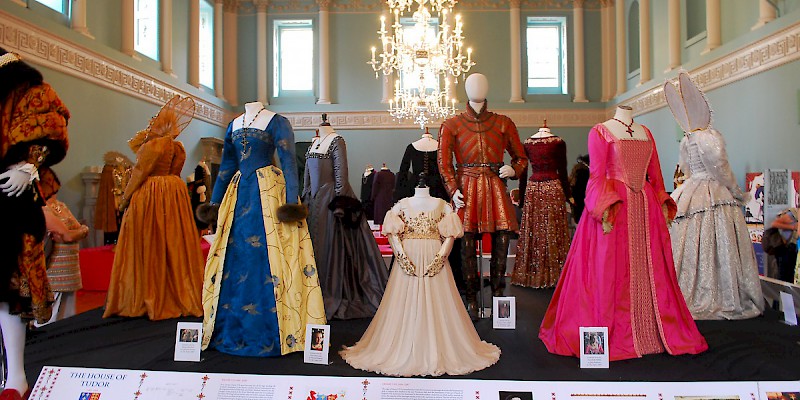Bath Fashion Museum ☆☆☆

A museum devoted to fashion in the gorgeous Georgian Assembly Rooms
The Assembly Rooms
The Bath Assembly Rooms were designed by John Wood the Younger in 1769, and remain some of the only public spaces preserved in all their Georgian glory.
The centerpiece is the 30m (100-foot) long, 14m (45-foot) wide grand ballroom, the hub around which the late 18C/early 19C carnival of Georgian life spun and glittered under elaborate Whitefriars crystal chandeliers and surrounded by paintings by Thomas Gainsborough, Allan Ramsay, Edwin Long and William Hoare.
In the Georgian era, mothers would bring their daughters to meet potential husbands at the balls held here twice a week during the season (October to June).
Grandees attended a seemingly never-ending string of parties, played cards, and closed deals in the ballroom, the equally-impressive tea room (18m/60 feet long and 13m/42 feet wide), or flanked by the four fireplaces of the Octagon (13m/42 feet across).
Jane Austen set scenes here in both Persuasion and Northanger Abbey (and filmmakers obligingly did, too, when adapting those Austen works in 1995 and 1986, respectively), as did Charles Dickens in The Pickwick Papers:
In the ball-room, the long card-room, the octagonal card-room, the staircases, and the passages, the hum of many voices, and the sound of many feet, were perfectly bewildering. Dresses rustled, feathers waved, lights shone, and jewels sparkled. There was the music — not of the quadrille band, for it had not yet commenced; but the music of soft tiny footsteps, with now and then a clear merry laugh — low and gentle, but very pleasant to hear in a female voice, whether in Bath or elsewhere.
— Charles Dickens, The Pickwick Papers
After serving as a movie palace in the 1930s, and bombed in 1942 during the Bath Blitz, the buildings were restored in 1963.
The Bath Museum of Fashion
The Assembly Rooms complex now houses the Bath Museum of Fashion (known from 1963 to 2007 as the Museum of Costumes), a collection featuring more than 30,000 objects of dress an accessories dating from the late 16th century to the present.
That might sound dull to many, but it's actually quite fascinating—and you (and the kids) even get to put on (reproduction!) Georgian style costumes, with hoop-skirts for the ladies and top hats for the gentlemen.

















